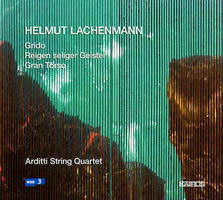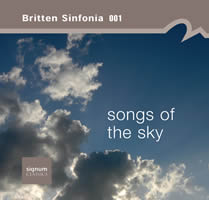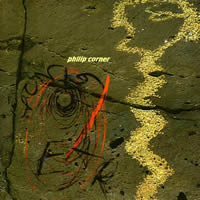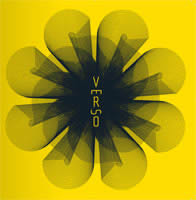Qualche tedeschi, qualche gaijin
|
Dan Albertson [April 2010.] [Tschörmans are recurring, now with foreigners. A series of articles on chamber music seems due, having not quite purged the backlog in two installments last year. When will it stop? Maybe sooner than I think. For Minoru Ueda, above all, a fellow chevalier who has profoundly enriched my new metropolitan life. Also for Simone Kermes, whose Pergolesi arie set my ears atwitter and were my own canti di liberazione; for Kim Jackson and ‘Tica,’ who cope with me; and for Paul Nicholson, an American against the odds, for sharing my disgust at the cutting of recitativi. D.A.]
Helmut LACHENMANN: Grido (2000-01, rev. 2002); Reigen seliger Geister (1989); Gran Torso (1971-72, rev. 1978 & 1988). Arditti String Quartet: Irvine Arditti, Ashot Sarkissjan (vlns), Ralf Ehlers (vla), Lucas Fels (vlc). Kairos 0012662KAI (http://www.kairos-music.com/). Distributed in the US by Allegro Music (http://www.allegro-music.com/). A direct comparison of the existing recordings of Lachenmann’s three quartets seems pointless. I heard this disc on its own merits, which are mixed. A few analogies are ineluctable. The reverse ordering risks skewing the evolution that is otherwise quite clear; technology easily restores the chronological order, if one prefers. Grido seems a ne plus ultra for Lachenmann, a work of consummate craft and majesty. Reigen is faster than the original Arditti recording, but not by much. The first eruption after a few minutes of quietude, quite a shock on the Montaigne Auvidis disc, is positively tame here, as though the recording has had its dynamics leveled out. Gran Torso impresses me the least of the trio, though for its time the achievement remains quite high. This recording seems suaver, less gritty, than I remember from earlier versions. The ASQ lineup has changed within the past few years and the new group has adjusted well, with all four instruments finely matched throughout. I wished only for more verve, but every occasion to appreciate these quartets from new angles is to be savored. The composer himself seems to be turning his attention to “spreading the gospel” to other groups, while staying indebted to the Ardittis. I wish him well.
Steve MARTLAND: Tiger Dancing (2005)***. Huw WATKINS: Dream (2006). Tarik O’REGAN: Raï (2006)***. Jason YARDE: Who Knows the Beauty (2006)**. Sir John TAVENER: Songs of the Sky (2005)*. Charles Daniels (ten)*, Yarde (alt sax)**, Britten Sinfonia, Jacqueline Shave (vln & dir.)***. Britten Sinfonia / Signum Records Britten Sinfonia 001 SIGCD149 (http://www.signumrecords.com/). Distributed in the US by Qualiton (http://www.qualiton.com/). Not much to recommend in these live recordings from 2005-07. Tiger Dancing has nine strings and endures 15’, which is nine strings and 15 minutes too many. Poor William Blake. The Watkins is short, but conveys nil in its c. 400 seconds that is memorable, unlike the best rêveries in life and music. Raï has the energy of Algerian pop music, and additional percussion from Adrian Bending and Jeremy Cornes, but so what and pourquoi? Yarde, a jazz musician, forgot to bring inspiration, directionality or substance. Tavener is Tavener. SotS is shorter than usual, though, and in English, which disappoints; the sources include Japanese death poems and a Bengali hymn to Kali. Charles Daniels sings beautifully in music that goes nowhere — and seems happy to be there, wherever ‘there’ is. Paul McCreesh needs you, Charles. Leave Sir John alone.
Philip CORNER: Gong (Cymbal) / Ear in the Desert (1991). Corner (Korean shaman cymbals in the sand), Steve Peters (listener with microphone). innova 227 (http://www.innova.mu/). Distributed in the US by Naxos (http://www.naxos.com/). Here is an oddity — and a pleasant one. Not everyday music and not meant to be, but a great escape when needed. Recorded at Tent Rocks (Kasha-Katuwe), NM, on April 22, 1991, here are 66’ of sand and occasional crashing and banging, but mostly the vastness of open spaces. Much of the tapestry could come from the world of Hildegard Westerkamp, though comparisons fail. Music for a lazy day that will quickly become less lazy: music for the imagination.
Alois BRÖDER: 14 neue Haiku (2005)*, +; Erdferne (1987-88)+; Kern.Spalte. (1991-92)**, ++; Abbozzi (1995)***, ++; Drei Spiele (1996)#, ++; 14 Haiku (1994)##, +. Eva Lebherz-Valentin (sop)##, Martin Hummel (bar)*, Johannes Fischer (alt rec)**, Linda Bangs (bar sax)#, Christopher Brandt (gui)+, Olaf Van Gonnissen (gui)++, Christoph von Erffa (vlc)#, Friederike Richter (pno)***, #. Dreyer & Gaido CD 21043 (http://www.dreyer-gaido.de/). Bröder is not a household name. He is active in Darmstadt, but has an approach not tied to the courses that make the city famous. Here is a useful introduction to his “chamber music with guitar,” framed by 28 haiku, the first 14 for baritone and the second 14 for soprano. Each set is in German translation: The first focuses on a more obscure parade of eight Japanese poets, while the second sets six poets, among whom are the celebrated Issa, Buson and Basho. The composer has an instinctive response to the poems and often surprises with the chosen journey. Both singers are agile and intimate enough to match a lonesome guitar. Between the poles are the guitar solo Erdferne, not particularly distinctive in character; Kern.Spalte. in which the recorder and guitar seem strangely sympathetic; the continuous, somewhat monolithic cascade of Abbozzi; and the fanciful Drei Spiele. D & G, heretofore unknown to me, accompanies the music with an informative and attractive presentation. This music is not revelatory, but its benefits grow with repeated listens.
David HELBICH: Drei Steine hoch (1999). Chiel MEIJERING: Free the Birds (1999). Gerard BELJON: Bird (1999). Ron FORD: Verso (2000). Timuçin SAHIN: Lifebirds (2003). Michiel MENSINGH: White Men CAN jump (2003). Louis Franz AGUIRRE: Ibeyi (2004, rev. 2006). Verso: Matthijs Koene (panflute), Stefan Gerritsen (gui). Karnatic Lab Records KLR 021 (http://karnaticlabrecords.com/). An hour of panflute / guitar is daunting; the yellow-and-black layout is stylish. Helbich has two short movements and a long one, at times shrill enough to please dogs, while Meijering is rhythmic Piazzolla-lite cast in four movements of aimless ornithology. The duo loves Verso and took its name from this piece, but as usual with Ron Ford, the music is a lifeless cantus firmus. Sahin and Mensingh are completely forgettable, but clear the way for the Aguirre, the longest work and what redeems this disc. The composer describes his style as “telluric and barbaric” and draws on Afro-Cuban ritual in creating a piece that is less bewitching when fast, yet always inhabits a world all its own. A dead flute joins a barren guitar to close. Death as beauty.
[More Dan Albertson]
[Previous Article:
String Theory 2: Violoncellos and Basses with Support]
[Next Article:
Piano Trios]
|




